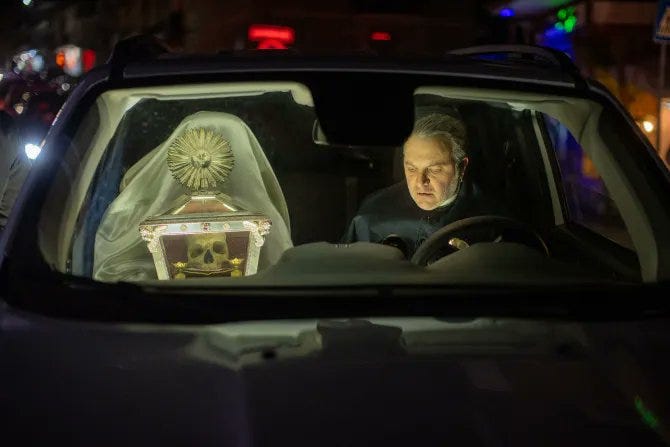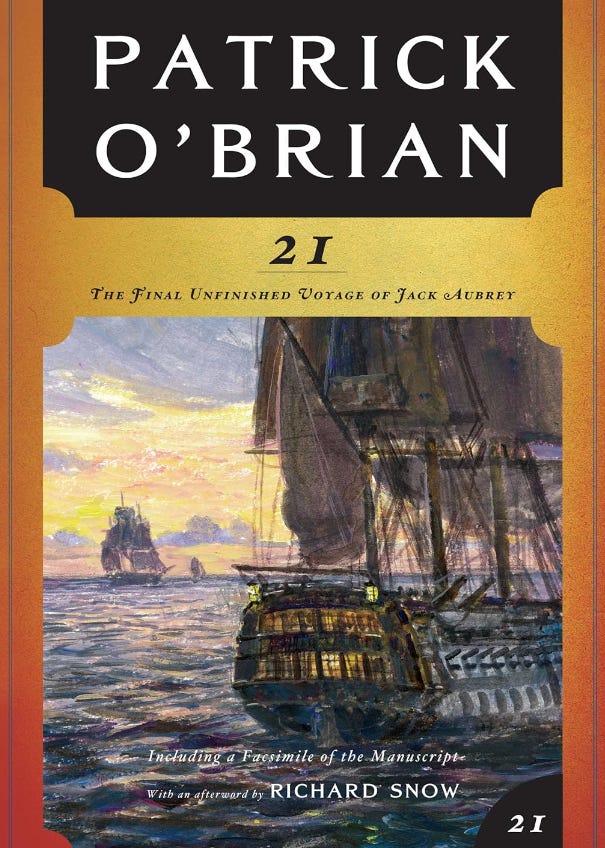The Week in Meep, 10 Mar 2024: The Skull of Aquinas, Michelangelo, and Ending in the Middle of It
Echoes of the end of life, appropriate for Memento Mori and Lent

Do I have your attention?
Taking a Skull for a Ride
Catholic News Agency: St. Thomas Aquinas’ relics carried in procession for 750th anniversary of his death
On the eve of the 750th anniversary of St. Thomas Aquinas’ death, a skull revered as a relic of St. Thomas Aquinas was carried in a solemn procession through the cobblestone streets of the southern Italian town of Priverno.
Bishop Mariano Crociata led the procession to honor the medieval philosopher and theologian widely considered one of the greatest thinkers in Western civilization who died in the nearby Fossanova Abbey on March 7, 1274.
If it’s not actually Aquinas’s skull, it’s no big deal.
It’s somebody’s skull!
And Aquinas did die 750 years ago, so there’s that.
Now, in the Roman Calendar, Aquinas’s Feast Day is January 28th and not March 7, so you may be wondering what’s up with that. Saints are usually commemorated on the day they died (the day they entered heaven), but the problem was March 7 is usually during Lent, so that’s no fun. January 28 was the day most of St. Thomas Aquinas’s relics were moved to Toulouse (okay, good enough reason to move the day). That change was made in 1969 - it had been March 7 in the old calendar.
I took Aquinas, along with Teresa Benedicta of the Cross (Edith Stein), as my Confirmation saints, as they were both academics. But to focus on Aquinas, he was a Dominican, and I’ve always been big on the rosary devotion, promoted by the Dominicans. I’ve always loved the teaching mission of the Dominicans, and then Aquinas himself and his straightforward approach (to me) in getting down to the core of principles… and then he was big on Eucharistic Adoration, wrote Pange Lingua, and I love it:
And here is a good book on the Dumb Ox by GK Chesterton:
Michelangelo and St. Peter’s Basilica
This is partly happenstance. I just finished up a book on Michelangelo recently: God’s Architect by William E. Wallace.
While I knew Michelangelo provided key artwork in the Vatican, most notably the Sistine Chapel and the sculptures of Moses and the Pieta… I had no idea the amount of involvement he had in the architecture of St. Peter’s Basilica itself.
This book details the last 17 years of Michelangelo’s life, from age 71 to almost 89 years old, working on the grand design of St. Peter’s Basilica as we know it today.

The happenstance was it was Michelangelo’s birthday last week:
The author of the book, William Wallace, wrote this article for Princeton University Press: “Michelangelo gave me a new perspective on aging” related to his work on this book:
I needed to pass age sixty before I could write a book about the artist Michelangelo Buonarroti in his seventies and eighties. How else could one understand those nagging aches of the body, the fear that slow but inexorable physical decline would soon be accompanied by mental deterioration, the melancholic realization that one’s diminishing circle of friends and family were either retiring, or worse, dying.
….
Michelangelo never retired. He lived 89 years in an era when life expectancy was age 40. Michelangelo began thinking about dying at 40 and continued to do so for the next fifty years. While he enjoyed good health, he suffered from kidney stones which he decried as “the cruelest thing.”
….
For the next seventeen years, from ages 71 to shortly before he died at 89, Michelangelo devoted himself to St. Peter’s. It gave him new purpose, and he came to believe that he was “put there by God to save St. Peter’s.” He was God’s architect.
Go to the link to read the whole thing.
The End of a Long Sea Voyage… Or Is It?
And this past week, I finished all of the Aubrey/Maturin books.
It was actually a fragment of a book, called, kind of “21” but here’s the whole title: 21: The Final Unfinished Voyage of Jack Aubrey
It was only 3 chapters and it stops in the middle of a side character talking about how he’s going to tell Napoleon on St. Helena how he screwed up….
Patrick O’Brian was 85 years old when he died in 2000.
Dying in the Saddle
Circling back to Aquinas, he was only about 48 years old when he died. However, he was in ill health at the time due to an accident while traveling:
On his way to the council, riding on a donkey along the Appian Way,[68] he struck his head on the branch of a fallen tree and became seriously ill again. He was then quickly escorted to Monte Cassino to convalesce.[67] After resting for a while, he set out again but stopped at the Cistercian Fossanova Abbey after again falling ill.[70] The monks nursed him for several days,[71] and as he received his last rites he prayed: "I have written and taught much about this very holy Body, and about the other sacraments in the faith of Christ, and about the Holy Roman Church, to whose correction I expose and submit everything I have written."[72] He died on 7 March 1274[70] while giving commentary on the Song of Songs.[73]
As for Michelangelo, he was a very old man when he died. He was working up until the end.
Similarly for Patrick O’Brian — he was working up until the time of his death. He died suddenly while in a hotel in Dublin in 2000. Being 85 years old, it cannot have been a huge surprise, but many may have been surprised to have been notified that Patrick O’Brian had no Irish background at all, but was originally named Richard Patrick Russ, and Patrick O’Brian was a pen name.
Memento Mori
So, this is all to say: remember we will all die… eventually.
It was all interesting to see Aquinas’s skull on a spree, to find out that Michelangelo’s greatest accomplishment was actually work that occurred after he died (the architectural plans he was not around to see completed), and also coincidentally, guess what the local library what trying to dump?
(That free book offer has long sailed, but that’s okay — I got these 6 for free)
These three men created works that have outlived them, but we will all die one day… and the works will die, too (when the sun goes nova/the human species disappears/etc).
So I leave you with a thought on Memento Mori as a way to think about eternity:










So why the fascination with 17th (18th?) century piracy?